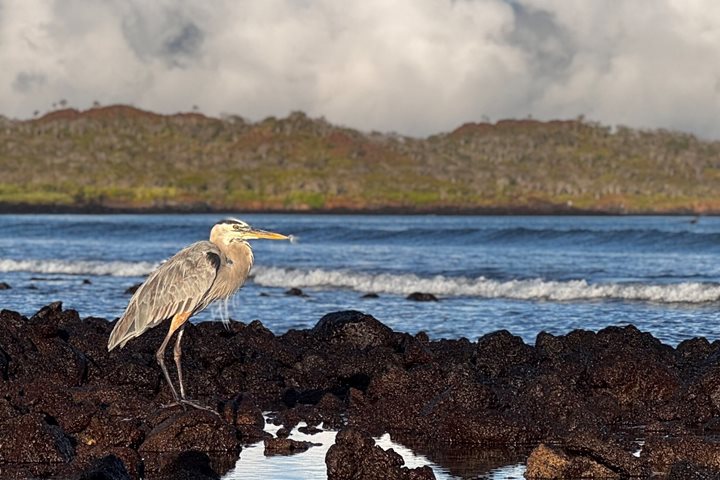Today we sailed to the western islands, Fernandina and Isabella. We reached Punta Espinoza, the northeastern part of Fernandina in the morning and walked along relatively new lava fields. Fernandina is the youngest island of the Galapagos. The last volcanic eruption happened last year.
The Western Islands are also colder and nutrient-rich due to the equatorial undercurrent and equatorial upwelling. Both events bring cold nutrient-rich waters with lots of nitrogen, phosphorous and iron that in turn fuel primary productivity (the growth rate of marine algae). This sustains the largest population of grazers such as marine iguanas and green sea turtles. Male marine iguanas at this time are very territorial because they are competing for mates. This is the peak of the mating season for marine iguanas.
In the afternoon we sailed to Punta Vicente Roca, a collapse caldera in the north part of Isabella, the largest island of the Galapagos. We used our Zodiacs to explore the walls of this caldera and observed several species that are abundant in the western part of the Islands.
Later, we tasted wine and crossed the equator on the 24th of December. A special opportunity to celebrate with family and friends.







